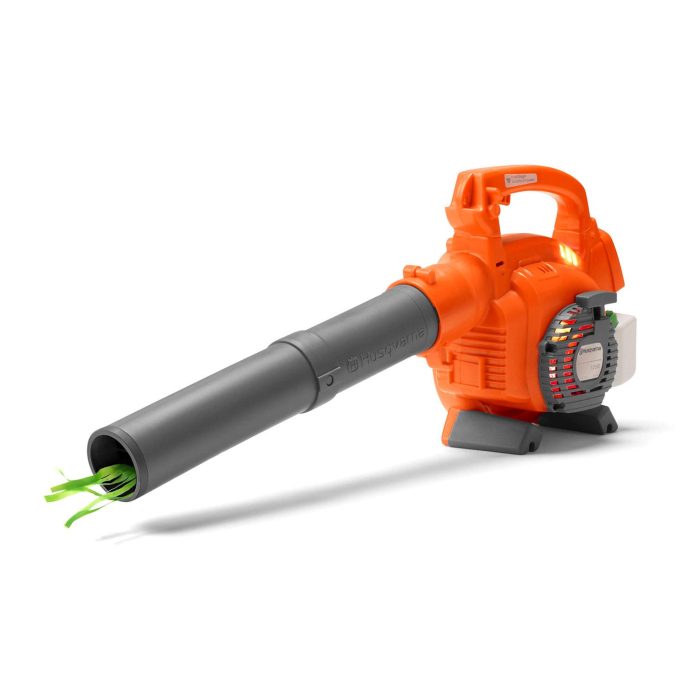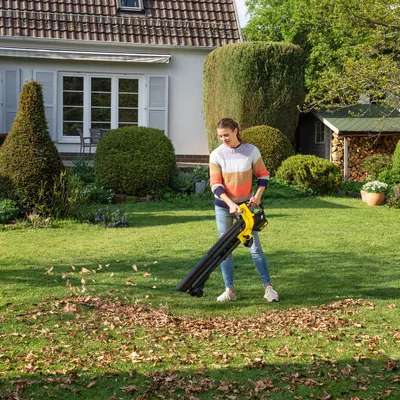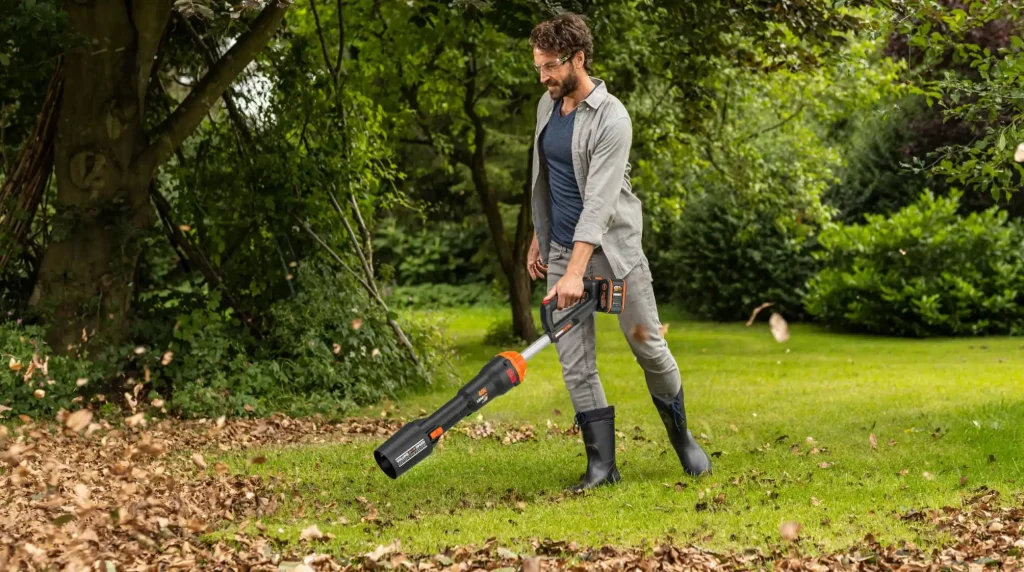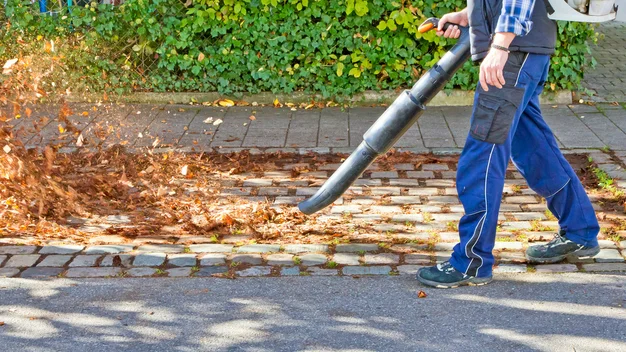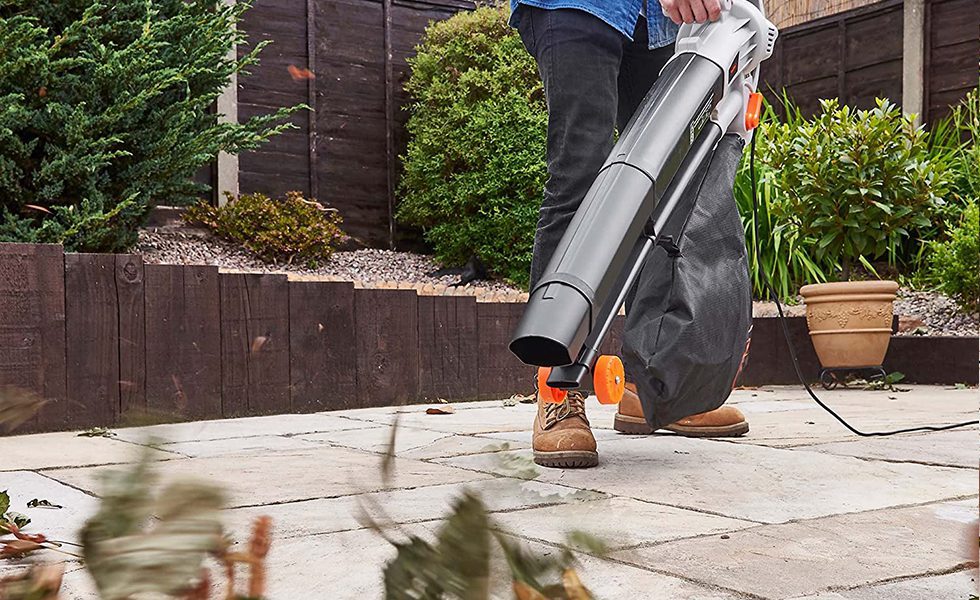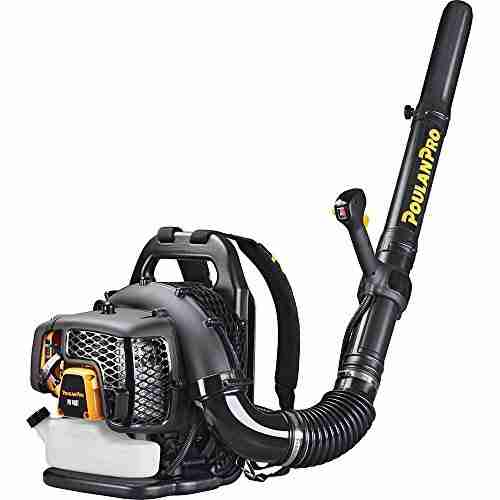If you’ve ever found yourself staring at a heap of leaves and debris in your garden, wondering if there’s an easier way to tackle the cleanup, you’re not alone.
Many garden enthusiasts have wondered if they can use a leaf blower to make the task a breeze.
Good news! The answer is a resounding yes. Using a leaf blower can quickly and efficiently clear debris from your garden, saving you time and effort.
In this article, we’ll explore the benefits of using a leaf blower for garden cleanup, as well as provide some helpful tips on using this versatile tool effectively.
So, please wear your gardening gloves, and let’s begin!
Benefits of using a leaf blower in the garden
Efficiency
One of the significant benefits of using a leaf blower in the garden is its efficiency. When compared to other methods of debris removal, such as raking or hand picking, a leaf blower is much faster and easier. With the powerful air stream it generates, a leaf blower can quickly clear leaves, grass clippings, and other debris from your garden, saving you a significant amount of time and effort.
Time-saving
Using a leaf blower can save you considerable time when it comes to garden maintenance. Instead of spending hours manually raking and bagging leaves, you can use a leaf blower to swiftly gather all the debris into a pile, making the cleaning process much quicker. This means you’ll have more time to enjoy your garden or focus on other outdoor tasks.
Versatility
Leaf blowers are incredibly versatile tools that can be used for various tasks in your garden. Aside from clearing leaves and debris, they can clear grass clippings after mowing and remove light snow from walkways and dry, wet surfaces. With the different attachments and settings available, you can quickly adapt the leaf blower to suit different cleaning needs in your garden.
Types of leaf blowers
Handheld leaf blowers
Handheld leaf blowers are compact and lightweight, making them easy to maneuver and carry around the garden. Depending on the model, they are powered by electricity or gasoline and are suitable for smaller yards or areas with limited space. Handheld leaf blowers are perfect for regular maintenance and can effectively clear leaves and debris from hard-to-reach corners and tight spaces.
Backpack leaf blowers
Backpack leaf blowers offer more power and efficiency than handheld models. They are designed to be worn on the back, distributing the weight evenly and reducing fatigue during extended use. Backpack leaf blowers usually run on gasoline engines, providing a higher airspeed and better performance. They are ideal for larger yards and properties with a substantial amount of debris to clear.
Wheeled leaf blowers
Wheeled leaf blowers, or walk-behind blowers, are the most potent and heavy-duty option. These machines are equipped with an engine and attached to a set of wheels, allowing you to walk behind and guide them while they blow away the debris. Wheeled leaf blowers are typically used for commercial or large-scale applications where a significant amount of debris needs to be cleared quickly and efficiently.
Considerations before using a leaf blower in the garden
Noise levels
One important consideration when using any leaf blower is the noise it generates. Leaf blowers can be pretty loud, especially the gas-powered models. Before using a leaf blower, consider any noise restrictions or regulations in your area, such as noise ordinances or community guidelines. Consider using electric leaf blowers, which tend to be quieter, or using the leaf blower during designated hours to minimize disturbance to yourself and your neighbors.
Environmental impact
Another consideration is the environmental impact of using a leaf blower. Gas-powered leaf blowers emit exhaust fumes, contributing to air pollution and carbon emissions. On the other hand, electric leaf blowers are more environmentally friendly as they produce no emissions during use. If reducing your carbon footprint is a priority, opt for an electric leaf blower or consider alternatives to leaf blowing, such as raking or mulching.
Safety precautions
Using a leaf blower in the garden requires specific safety precautions to prevent accidents or injuries. Always wear appropriate safety gear, such as goggles to protect your eyes from flying debris, ear protection to reduce noise damage, and gloves to shield your hands. Be cautious when operating the leaf blower near people or pets, as the high airspeed can cause injury. Familiarize yourself with the manufacturer’s instructions and safety guidelines to ensure safe and proper use of the leaf blower.
Preparing the garden for leaf-blowing
Clearing obstacles
Before using a leaf blower, it’s essential to clear any obstacles or potential hazards from your garden. Remove large branches, rocks, or any other debris that could be hazardous if blown around by the leaf blower. Clearing the area will not only prevent damage to the blower but also reduce the risk of accidents or injury during the leaf blowing process.
Protecting delicate plants
While leaf blowers are effective at removing debris, they can also be powerful enough to damage delicate plants. Before using a leaf blower, take the time to protect any tender or fragile vegetation in your garden. Cover delicate plants with sheets of lightweight fabric to shield them from the forceful airflow. This will ensure your garden looks beautiful and healthy, even after leaf blowing.
Checking weather conditions
Before firing up your leaf blower, it’s essential to check the weather conditions. Windy conditions can make leaf blowing less effective, as the wind may scatter the debris before you can collect it. Additionally, using a leaf blower in wet or rainy conditions can lead to clogging and potential damage to the blower. Wait for a calm, dry day to ensure optimal leaf-blowing results.
Techniques for effective leaf-blowing
Choosing the right speed
Leaf blowers usually come with variable speed settings to accommodate different cleaning tasks. For lighter debris or delicate areas, such as flower beds or mulched areas, use a lower speed setting to prevent damage. When dealing with heavier debris or large open areas, increase the speed to move the debris into piles efficiently. Experiment with the speed settings to find the best for your garden cleaning needs.
Directing the airflow
To effectively gather and move the debris, it’s essential to learn how to direct the airflow of the leaf blower. Aim the nozzle towards the base of the pile or the edge of the area you want to clear. Use a side-to-side motion to create a sweeping effect, pushing the debris in the desired direction. By mastering the technique of directing the airflow, you can efficiently clear your garden of debris in no time.
Using the appropriate attachments
Leafblowers often come with various attachments that can enhance their functionality. These attachments can include narrow nozzles for concentrated airflow, extension tubes for reaching high or hard-to-reach areas, or even vacuum attachments for collecting debris directly into a bag. Experiment with different attachments to find the ones that work best for your garden needs and make the leaf-blowing process even more efficient.
Proper maintenance of a leaf blower
Cleaning the blower regularly
Maintaining a clean leaf blower is crucial to ensure its optimal performance and longevity. After each use, make it a habit to thoroughly clean the blower, removing any debris or leaves that may have accumulated. Pay special attention to the air intake vents and fan blades, as these areas can become clogged and impede proper airflow. Regular cleaning will prevent damage and ensure your leaf blower operates efficiently whenever you need it.
Inspecting and replacing parts
To keep your leaf blower running smoothly, inspecting and replacing worn or damaged parts as needed is essential. Check the spark plug, air filter, and fuel filter regularly, and replace them if they show signs of wear or obstruction. Keep an eye on the blower tube for any cracks or damage that may affect the airflow. By maintaining and replacing parts when necessary, you’ll prolong the lifespan of your leaf blower.
Storing the blower correctly
Proper storage of your leaf blower is essential to protect it from damage and ensure it remains in good working condition. Store the blower in a clean, dry area, away from direct sunlight and extreme temperatures when not in use. If your blower has a fuel tank, drain it before storing it to prevent fuel deterioration. Check the manufacturer’s guidelines for specific storage instructions to maintain the reliability and performance of your leaf blower.
Alternatives to leaf blowers for debris removal
Raking
Raking is the traditional debris removal method and is still widely used by many gardeners. This manual approach allows for more control over the leaves and debris, but it can be time-consuming and physically demanding, especially if you have a large area to clean. Raking is a suitable alternative for those who prefer a more hands-on approach or for smaller gardens with less debris.
Mulching
Mulching involves shredding the leaves and debris into smaller pieces and using them as a natural mulch for the garden. Mulching not only helps to recycle the organic matter back into the soil but also provides nutrients and insulation for plants. Mulching can be done using a mulching mower or a specialized leaf shredder. This method is ideal for improving soil health and reducing the need for external fertilizers.
Composting
Composting is another eco-friendly alternative to leaf blowing. Instead of removing the leaves and debris from your garden, you can collect them and create a compost pile. Composting allows the organic matter to break down naturally, creating nutrient-rich compost that can be used to enrich the soil in your garden. This method is not only beneficial for your plants but also helps to reduce waste and promote sustainability.
Cautions when using a leaf blower
Avoiding blowing debris onto neighbors’ property
When using a leaf blower, be mindful of the direction in which you’re blowing the debris. Avoid blowing the leaves, grass clippings, or other debris onto your neighbors’ property, as this can be inconvenient and impolite. Take care to direct the airflow towards your own garden or, if necessary, use a barrier, such as a tarp, to prevent the debris from traveling beyond its intended area.
Disposing of debris responsibly
After using a leaf blower, it’s essential to dispose of the collected debris responsibly. Bag the leaves and debris and dispose of them properly according to your local waste management guidelines. Consider composting the organic matter if applicable, or check if your area offers green waste collection services. You contribute to a clean and sustainable environment by disposing of the debris responsibly.
Being mindful of nearby wildlife
When operating a leaf blower, be aware of any nearby wildlife that may be affected by the noise and airflow. The loud noise and powerful gusts of air can startle or disturb animals, so try to avoid using the leaf blower close to wildlife habitats. Take breaks if you notice any wildlife nearby, or consider using alternative methods of debris removal in areas frequented by birds, squirrels, or other animals.
Regulations and restrictions on leaf blower usage
Local noise ordinances
Many cities and municipalities have noise ordinances in place that regulate the allowable noise levels for leaf blowers and other outdoor equipment. Before using a leaf blower, familiarize yourself with your local noise regulations to avoid any potential legal issues or complaints from neighbors. Consider using quieter electric models or adhering to designated hours for leaf blower use to help minimize noise disturbances.
Community Guidelines
In addition to formal noise ordinances, some communities may have specific guidelines or homeowners’ association (HOA) rules regarding leaf blower usage. These guidelines may dictate the specific times when leaf blowers can be used or may even ban their use altogether. It’s essential to familiarize yourself with these community guidelines to ensure you comply with the rules and maintain good relations with your neighbors.
Time restrictions
Certain areas may impose time restrictions on when leaf blowers can be used. These restrictions are often in place to minimize noise disturbances during early morning or late evening hours. Check with your local authorities to determine any time restrictions on leaf blower usage in your area. It’s essential to respect these time restrictions to avoid complaints from neighbors or potential fines for non-compliance.
Conclusion
When considering clearing debris from your garden, a leaf blower can be an efficient and time-saving tool. It offers benefits such as increased efficiency, time savings, and versatility in tackling various cleaning tasks.
However, weighing the pros and cons and considering your specific needs before deciding on the debris removal method is essential. Whether you choose to use a leaf blower, opt for alternative methods like raking or mulching, or explore eco-friendly options such as composting, make sure it aligns with your garden maintenance goals and environmental considerations.
By choosing the method that suits your needs, you can keep your garden clean and beautiful while minimizing your impact on the environment.

